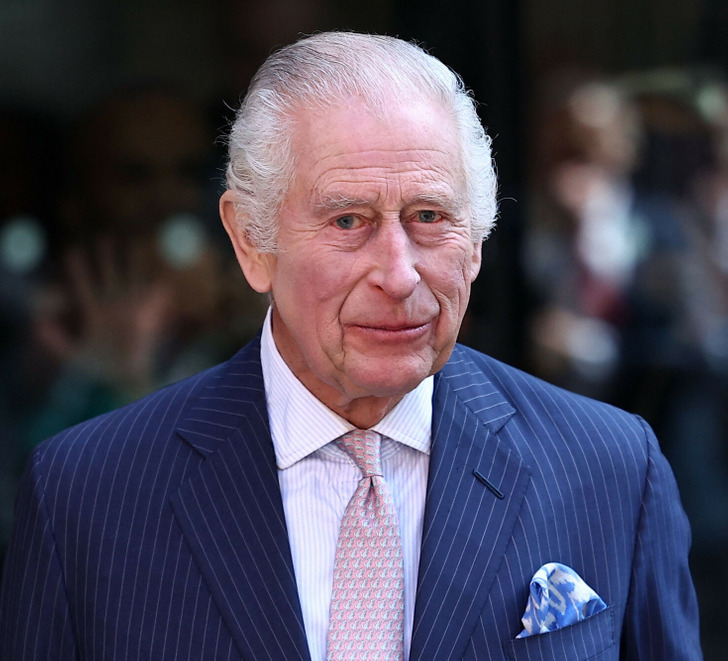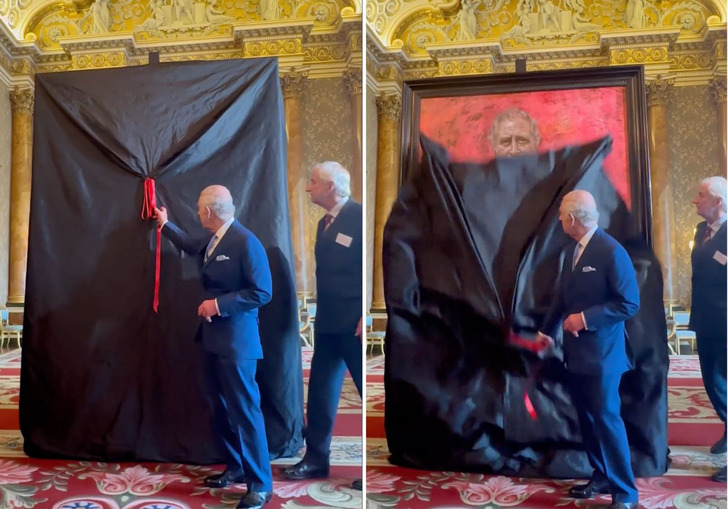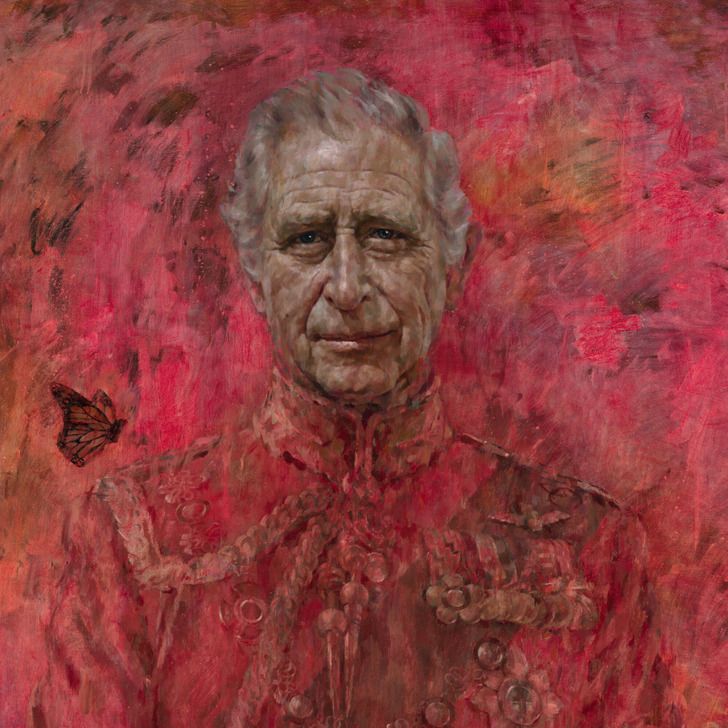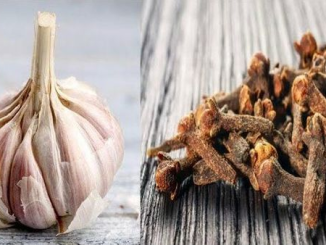In a much-anticipated reveal, King Charles III’s first official portrait since becoming king has sparked widespread conversation. Public reactions and critics’ opinions are far from mild, igniting lively debates on social media and among art enthusiasts. It’s evident that King Charles’ portrait is poised to be one of the most discussed royal artworks in recent memory.
Revealing the artwork

Recently, King Charles III revealed a new portrait of himself at Buckingham Palace, marking the first since his coronation. The Royal Family’s Instagram account posted an exclusive video showing the king presenting the artwork.
This notable portrait will eventually be showcased at Drapers’ Hall in London, joining its esteemed art collection and providing the public with a chance to see the monarch’s regal image.
The comments section quickly became a hotbed of debate.

The unveiling ignited a heated debate in the comments on the Royal Family’s Instagram post and other social media platforms. Opinions were sharply divided, with some users harshly criticizing the portrait. Comments included, “I would be very upset and offended if this was my royal portrait. It looks like a floating head in a sea of red. This is awful. Horrendous.”
One person said, “This is terrifying. Red is ALWAYS a bad sign unless it’s roses. This looks like a blood bath,” while another added, “It looks like it’s on fire.”
Despite the negative feedback, there were also positive remarks such as, “I love the portrait. It’s beautiful.” These mixed reactions highlight the polarizing nature of the portrait and the strong emotions it has stirred among the public.
What it actually represents

Jonathan Yeo, a well-known artist renowned for his innovative style in painting people, has gained praise for his ability to merge classic techniques with new ideas in portraiture. Yeo’s method involves more than just painting what someone looks like; he delves deep into the personalities of his subjects to capture their true essence.
In his latest work portraying King Charles III, Yeo stayed true to this approach. He aimed to strip away any distractions in the painting, focusing solely on allowing viewers to connect with the person behind the royal title. By spending time with the king and understanding him on a personal level, Yeo was able to create a portrait that goes beyond surface appearances and reveals the human within.

In Yeo’s portrait of King Charles III, one striking detail is the presence of a butterfly. This butterfly isn’t just a random addition; it holds deep symbolism and serves multiple purposes. Yeo explained that beyond representing the beauty of nature, the butterfly also highlights the environmental causes that the King has long supported, even before they became widely discussed.
Moreover, the butterfly adds visual interest to the portrait, breaking the uniformity and adding layers of meaning. In art history, butterflies often symbolize transformation and renewal, mirroring the King’s journey from Prince to monarch during the time the portrait was painted. This choice underscores the significant changes in King Charles’s life.
Yeo expressed his gratitude for the opportunity to create such an important portrait, “To try and capture that for His Majesty The King, who occupies such a unique role, was both a tremendous professional challenge and one which I thoroughly enjoyed and am immensely grateful for.”
Explore King Charles III’s life in-depth with 8 Things About King Charles III That Will Help Us Understand Him Better. Delve beyond his royal image to uncover intriguing insights into his interests, personal stories, and distinctive characteristics.
70s’ heartthrob Christopher Atkins disappeared from the spotlight – see him now at 63
The actor who once stole hearts in The Blue Lagoon has resurfaced, looking very different from his teenage days – with silver hair and lines etched into his face, his transformation reflects a life fully
lived.
Away from Hollywood’s limelight, he faced struggles that nearly broke him, but today, he’s embraced a quieter life.
Let’s look at the twists and turns of his journey, from battling alcoholism to bankruptcy, and where he stands now…

Christopher Atkins, the former Blue Lagoon star, skyrocketed to fame over four decades ago, largely due to his role in the iconic 1980 film. Although acting was not his initial dream, fate had other plans.
Born in New York, Atkins grew up aspiring to become a professional baseball player, but a knee injury ended his athletic ambitions. Instead of heading to the baseball field, he found himself teaching sailing and trying his hand at modeling. A fateful audition led to his breakthrough as Richard in The Blue Lagoon, a role that would change his life forever.
Atkins was chosen from among 4,000 hopefuls for the part, a testament to his undeniable on-screen charisma, Now to Love detailed. The film, co-starring Brooke Shields, told the story of two teenagers stranded on a tropical island and quickly became a box-office sensation.
One of the first mainstream movies to feature male nudity, it was an intimidating experience for the young actor, but his performance captured audiences worldwide.
Following his success in The Blue Lagoon, Atkins went on to star in The Pirate Movie, where he met Australian model Lyn Barron.
Reminiscing on their whirlwind romance, he shared: “It was love at first sight, and six months later we were married. We went on to have two kids, Grant and Brittany.” However, the glamorous Hollywood life came with a darker side.
As Atkins’ career progressed, the pressures of fame began to weigh heavily. Constant travel, extravagant parties, and high expectations led him down a dangerous path of alcoholism.
Although the family had settled in Los Angeles, their seemingly perfect life unraveled when Atkins discovered that his former manager had embezzled nearly half a million dollars from him. The financial betrayal left the star nearly bankrupt, leading to an alcohol-fueled breakdown in 1986. Reflecting on that challenging period, he admitted to Lifestyle Magazine: “There is nothing worse than having your whole life pulled out from under you.

His turning point came after a heated argument with his wife, which prompted his parents to step in. Atkins entered rehab for 28 days to confront his addiction. After completing treatment, he emerged with a new perspective on life. “I came out of there realizing that I wanted to be a dad more than I wanted to be a drunk,” he said. Despite his efforts, his marriage couldn’t survive the strain of his struggles. “Sadly, the marriage didn’t last, but we remain genuinely great friends,” he added.
Atkins has now been sober for over 30 years, a milestone he takes pride in. He made a conscious effort to be a devoted father, focusing on his children, Grant and Brittany. Grant pursued baseball, chasing the dream his father once had, while Brittany ventured into acting, appearing in British children’s films, including one written by her father.
While Atkins continued to work in film and television, he longed for another major box office hit like The Blue Lagoon. “I consider myself an actor, that’s what I’ve done for 43 years… I still, to this day, dream of being in an ‘A’ movie again,” he revealed.
Outside of his career, Atkins remains hopeful about love. Having been married for 20 years and experienced other relationships, he still seeks a partner who shares his zest for life. “I want a woman, obviously no drama, I’m too old for that. A woman who loves to laugh, can be spontaneous…has to be open,” he shared, per Page Six.
Now a grandfather to three boys, Atkins finds immense joy in his role. “I take them snake hunting, we go camping, fishing, play ball, wrestle all the time, we have a blast. They’re so much fun,” he said.
Christopher Atkins’ transformation is a true testament to his resilience – what an inspiration to us all!



Leave a Reply